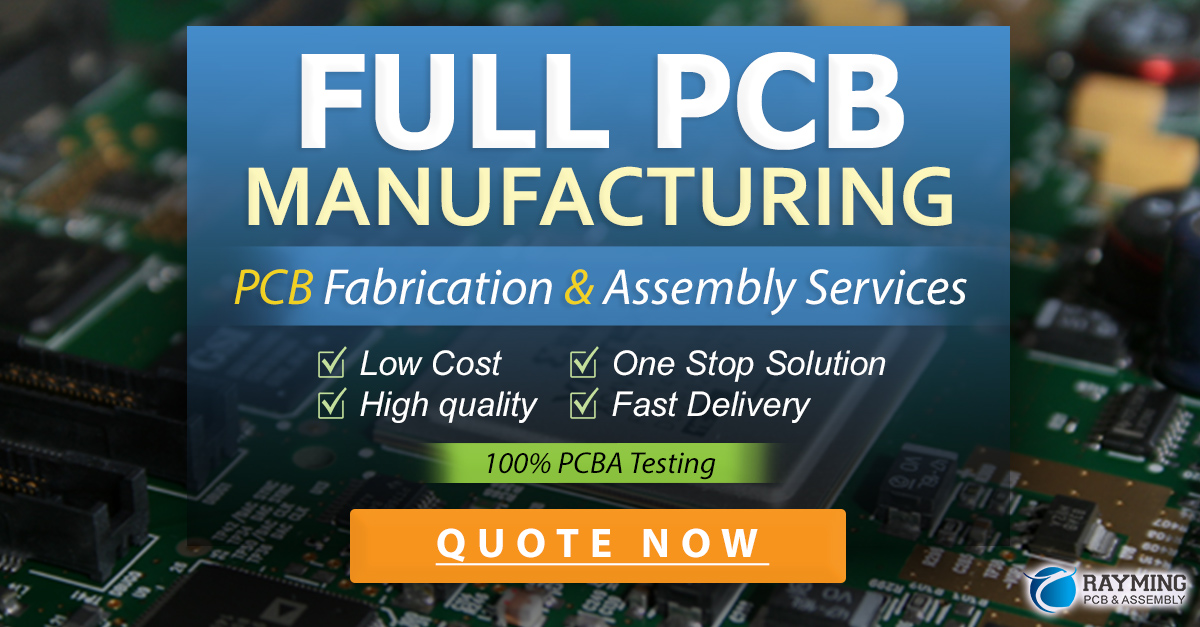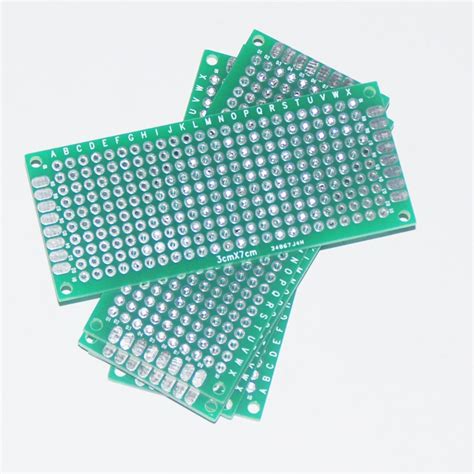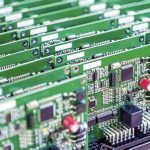What is a PCB prototype?
A PCB (Printed Circuit Board) prototype is a preliminary version of a printed circuit board that is used for testing and evaluation purposes before mass production. It is an essential step in the electronics manufacturing process, allowing designers and engineers to validate the functionality, performance, and reliability of their circuit designs.
PCB prototypes are typically fabricated using the same materials and processes as the final production boards but in smaller quantities. They enable developers to identify and fix any design flaws, compatibility issues, or manufacturing challenges early in the development cycle, saving time and costs in the long run.
Benefits of PCB Prototyping
-
Design Validation: PCB prototypes allow designers to test their circuit designs in real-world conditions, ensuring that they function as intended. This helps identify any design flaws or potential improvements before committing to mass production.
-
Cost Savings: By identifying and addressing issues early in the development process, PCB prototyping can help avoid costly redesigns and production delays. It enables designers to optimize their designs for manufacturability, reducing overall production costs.
-
Compatibility Testing: PCB prototypes enable developers to test the compatibility of their designs with other components, subsystems, and software. This ensures smooth integration and interoperability in the final product.
-
Performance Evaluation: Prototyping allows designers to evaluate the performance of their circuit boards under various operating conditions, such as temperature, humidity, and electrical loads. This helps optimize the design for reliability and durability.
-
Rapid Iteration: PCB prototypes enable designers to quickly iterate on their designs based on testing and feedback. This agile approach accelerates the development process and allows for continuous improvement.
PCB Prototype Fabrication Process
The PCB prototype fabrication process involves several steps, from design to assembly. Here’s an overview of the typical workflow:
1. Design and Layout
The first step in PCB prototyping is designing the circuit schematic and layout using electronic design automation (EDA) software. This involves creating a digital representation of the circuit, specifying component placement, and routing the connections between them.
Designers must adhere to various design rules and guidelines to ensure manufacturability and reliability. These include minimum trace widths, spacing between components, and hole sizes for through-hole components.
2. Gerber File Generation
Once the design is finalized, the next step is to generate Gerber files. Gerber is a standard file format used in PCB manufacturing that contains all the necessary information for fabricating the board, including the copper layers, solder mask, silkscreen, and drill holes.
EDA software typically includes tools for generating Gerber files from the PCB layout. These files are then sent to the PCB manufacturer for fabrication.
3. PCB Fabrication
The PCB fabrication process involves several steps, including:
-
Copper Deposition: A thin layer of copper is deposited onto the surface of the substrate material, typically FR-4 (a type of fiberglass).
-
Patterning: The copper layer is patterned using photolithography and etching processes to create the desired circuit traces and pads.
-
Lamination: Multiple layers of patterned copper and insulating material are laminated together under high pressure and temperature to form the multi-layer PCB.
-
Drilling: Holes are drilled through the PCB to accommodate through-hole components and vias (vertical interconnect access) that connect different layers.
-
Plating: The drilled holes are plated with copper to create electrical connections between layers.
-
Solder Mask Application: A protective solder mask is applied to the PCB surface, leaving only the exposed pads and vias for soldering.
-
Silkscreen Printing: The component labels, logos, and other markings are printed onto the PCB using silkscreen printing.
-
Surface Finish: A surface finish, such as HASL (Hot Air Solder Leveling) or ENIG (Electroless Nickel Immersion Gold), is applied to the exposed copper to prevent oxidation and improve solderability.
4. PCB Assembly
After the PCB fabrication is complete, the next step is to assemble the components onto the board. This can be done manually for low-volume prototypes or using automated assembly processes for higher volumes.
The components are typically soldered onto the PCB using one of two methods:
-
Through-Hole Assembly: Components with long leads are inserted through the holes in the PCB and soldered onto the other side.
-
Surface Mount Assembly: Components with small pads are placed onto the surface of the PCB and soldered using a reflow oven or wave soldering machine.
5. Testing and Inspection
Once the PCB is assembled, it undergoes various testing and inspection procedures to ensure functionality and quality. These may include:
-
Visual Inspection: The PCB is visually inspected for any defects, such as solder bridges, cold solder joints, or misaligned components.
-
Automated Optical Inspection (AOI): An automated system uses cameras and image processing software to detect assembly defects.
-
X-Ray Inspection: X-ray imaging is used to inspect hidden solder joints, such as those under BGA (Ball Grid Array) packages.
-
Electrical Testing: The PCB is powered up and tested for proper functionality, signal integrity, and performance.
-
Boundary Scan Testing: A specialized testing technique that uses JTAG (Joint Test Action Group) interfaces to test the interconnections between components.
Any issues identified during testing are addressed through rework or redesign, and the prototypes are retested until they meet the required specifications.
PCB Prototype Manufacturing Methods
There are several manufacturing methods used for PCB prototyping, each with its own advantages and limitations. Here are some of the most common methods:
1. Traditional PCB Fabrication
Traditional PCB fabrication involves the standard process of copper deposition, patterning, lamination, drilling, and plating, as described earlier. This method is suitable for most PCB designs and offers good reliability and durability.
However, traditional fabrication can be time-consuming and costly for low-volume prototypes, as it requires the creation of custom tooling and masks for each design.
2. Quick-Turn PCB Fabrication
Quick-turn PCB fabrication is a faster and more cost-effective alternative to traditional fabrication for low-volume prototypes. This method uses pre-fabricated PCB panels with standardized specifications, such as material, thickness, and copper weight.
Designers can submit their Gerber files to a quick-turn PCB manufacturer, who will panelize the design onto a pre-fabricated panel and route it out using CNC (Computer Numerical Control) machines. This eliminates the need for custom tooling and reduces the manufacturing time and cost.
However, quick-turn fabrication may have limitations in terms of the available materials, layer counts, and feature sizes, depending on the manufacturer’s capabilities.
3. PCB Milling
PCB milling is a subtractive manufacturing method that uses a CNC milling machine to remove copper from a pre-clad PCB substrate, creating the desired circuit patterns. This method is suitable for simple, low-density designs and can produce prototypes quickly and inexpensively.
However, PCB milling has limitations in terms of the achievable feature sizes, layer counts, and hole sizes. It is not suitable for high-density designs or designs with fine-pitch components.
4. 3D Printing
3D printing is an additive manufacturing method that can be used to create PCB prototypes. There are two main approaches to 3D printing PCBs:
-
Conductive Ink Printing: A 3D printer with a conductive ink extruder is used to print the circuit traces and pads directly onto a substrate material. This method is suitable for simple, single-layer designs and can produce prototypes quickly and inexpensively.
-
Structural 3D Printing: A standard 3D printer is used to create the structural elements of the PCB, such as the substrate and component housings. The conductive traces are then added using other methods, such as conductive ink printing or manual wiring.
3D printing offers rapid prototyping capabilities and allows for the creation of complex, three-dimensional structures. However, it has limitations in terms of the achievable feature sizes, conductivity, and reliability compared to traditional PCB fabrication methods.

Choosing a PCB Prototype Manufacturer
Choosing the right PCB prototype manufacturer is crucial for ensuring the quality, reliability, and timely delivery of your prototypes. Here are some factors to consider when selecting a manufacturer:
1. Manufacturing Capabilities
Consider the manufacturer’s capabilities in terms of the available PCB fabrication and assembly processes, materials, layer counts, and feature sizes. Ensure that they can accommodate your specific design requirements and provide the necessary services, such as design review, testing, and inspection.
2. Turnaround Time
PCB prototyping often requires fast turnaround times to meet tight development schedules. Look for manufacturers that offer quick-turn fabrication and assembly services with guaranteed delivery times. Some manufacturers may offer expedited services for an additional fee.
3. Quality and Reliability
The quality and reliability of your PCB prototypes are critical for accurate testing and evaluation. Choose a manufacturer with a proven track record of producing high-quality PCBs and a commitment to quality control and assurance. Look for certifications such as ISO 9001, IPC, and UL, which indicate adherence to industry standards and best practices.
4. Customer Support and Communication
Good customer support and communication are essential for a smooth and successful prototyping experience. Look for manufacturers that provide responsive and knowledgeable technical support, clear communication channels, and regular project updates. They should be able to answer your questions, provide guidance, and address any issues promptly.
5. Cost and Pricing
PCB prototyping costs can vary significantly depending on the manufacturing method, design complexity, and volume. Compare pricing from multiple manufacturers and consider the total cost of ownership, including any additional services, shipping, and handling fees. Look for manufacturers that offer transparent and competitive pricing with no hidden costs.
6. Intellectual Property Protection
If your PCB design contains proprietary or sensitive information, it is important to choose a manufacturer that respects and protects your intellectual property. Look for manufacturers that have strict confidentiality policies and agreements in place and are willing to sign non-disclosure agreements (NDAs) if required.
PCB Prototype Testing and Validation
Testing and validation are critical steps in the PCB prototyping process to ensure that the design meets the required specifications and performs as intended. Here are some common testing and validation methods:
1. Visual Inspection
Visual inspection is the first step in PCB prototype testing and involves examining the board for any visible defects, such as solder bridges, cold solder joints, or damaged components. This can be done manually or using automated optical inspection (AOI) systems.
2. Electrical Testing
Electrical testing involves verifying the electrical characteristics and functionality of the PCB prototype. This can include:
- Continuity Testing: Checking the continuity of the electrical connections between components and traces.
- Isolation Testing: Verifying the electrical isolation between different sections of the board.
- Voltage and Current Measurements: Measuring the voltage and current levels at various points on the board to ensure they are within the specified limits.
- Signal Integrity Testing: Evaluating the quality and integrity of the electrical signals transmitted through the board.
3. Functional Testing
Functional testing involves verifying that the PCB prototype performs the intended functions and meets the system requirements. This can include:
- Power-On Testing: Verifying that the board powers up correctly and all components receive the required voltage and current.
- Firmware and Software Testing: Testing the board with the associated firmware and software to ensure proper functionality and communication.
- Environmental Testing: Subjecting the board to various environmental conditions, such as temperature, humidity, and vibration, to evaluate its performance and reliability.
4. Boundary Scan Testing
Boundary scan testing is a specialized testing technique that uses JTAG (Joint Test Action Group) interfaces to test the interconnections between components on the board. This method allows for testing of individual components and their connections without the need for physical access to the board.
5. X-Ray Inspection
X-ray inspection is used to examine the internal structure of the PCB prototype, particularly the solder joints and connections that are not visible from the surface. This method can detect defects such as voids, cracks, or incomplete solder joints.
6. Automated Testing
Automated testing involves using specialized equipment and software to perform various tests on the PCB prototype. This can include flying probe testing, which uses movable probes to test individual points on the board, or in-circuit testing, which uses a bed-of-nails fixture to test multiple points simultaneously.
Automated testing can significantly reduce the time and effort required for testing and provide more consistent and accurate results compared to manual testing methods.
Common PCB Prototype Design Considerations
When designing a PCB prototype, there are several key considerations to keep in mind to ensure a successful and reliable design. Here are some common design considerations:
1. Component Selection
Choosing the right components is critical for the functionality, reliability, and manufacturability of your PCB prototype. Consider factors such as:
- Functionality: Ensure that the selected components meet the required specifications and perform the intended functions.
- Availability: Choose components that are readily available and have stable supply chains to avoid delays and obsolescence issues.
- Cost: Consider the cost of the components and their impact on the overall project budget.
- Footprint and Packaging: Select components with footprints and packages that are compatible with your PCB design and manufacturing processes.
2. Layout and Routing
The layout and routing of your PCB prototype can have a significant impact on its performance, reliability, and manufacturability. Consider the following:
- Signal Integrity: Ensure that the signal traces are properly routed to minimize crosstalk, reflections, and other signal integrity issues.
- Power Integrity: Provide adequate power and ground planes to minimize voltage drops and ensure stable power delivery to all components.
- Electromagnetic Compatibility (EMC): Design the board to minimize electromagnetic interference (EMI) and ensure compliance with relevant EMC standards.
- Manufacturing Constraints: Adhere to the manufacturing constraints and design rules provided by your PCB manufacturer to ensure manufacturability and reliability.
3. Thermal Management
Proper thermal management is essential for the reliability and longevity of your PCB prototype. Consider the following:
- Component Power Dissipation: Evaluate the power dissipation of the components and ensure that they operate within their specified temperature ranges.
- Thermal Resistance: Consider the thermal resistance of the PCB materials and the effectiveness of the heat dissipation methods, such as copper pours, thermal vias, and heatsinks.
- Airflow and Cooling: Ensure adequate airflow and cooling for the PCB and its components, especially in enclosed or high-temperature environments.
4. Mechanical Considerations
The mechanical design of your PCB prototype should consider factors such as:
- Board Size and Shape: Choose a board size and shape that fits within the available space and accommodates all the required components and connectors.
- Mounting and Enclosure: Consider the mounting and enclosure requirements, such as screw holes, standoffs, and component heights.
- Connector Placement: Ensure that the connectors are properly placed and oriented for easy access and cable management.
5. Testing and Debugging
Design your PCB prototype with testability and debugging in mind. Consider the following:
- Test Points: Include test points and probe pads for easy access to critical signals and power rails during testing and debugging.
- JTAG and Debug Interfaces: Incorporate JTAG or other debug interfaces for firmware and software debugging.
- Isolation and Protection: Include isolation and protection features, such as fuses, TVS diodes, and ESD protection, to prevent damage during testing and handling.
PCB Prototype Assembly Best Practices
Proper assembly is crucial for the functionality, reliability, and longevity of your PCB prototype. Here are some best practices to follow during the assembly process:
1. Solder Paste Application
Solder paste is a mixture of tiny solder particles suspended in a flux medium that is applied to the PCB pads before component placement. Ensure that the solder paste is applied evenly and accurately using a stencil or syringe. Insufficient or excessive solder paste can lead to solder defects and reliability issues.
2. Component Placement
Place the components onto the PCB pads accurately and securely. Use a pick-and-place machine for high-volume assembly or tweezers for manual placement. Ensure that the components are oriented correctly and seated properly on the pads.
3. Reflow Soldering
Reflow soldering is the process of heating the PCB and components to a specific temperature profile to melt the solder paste and form a permanent connection. Follow the recommended temperature profile for the specific solder paste and components used. Ensure that the reflow oven is calibrated and the temperature is uniform across the board.
4. Inspection and Rework
After soldering, inspect the PCB for any defects or issues, such as solder bridges, cold solder joints, or misaligned components. Use visual inspection, automated optical inspection (AOI), or X-ray inspection as appropriate. If any defects are found, perform rework using a soldering iron, hot air rework station, or other suitable tools.
5. Cleaning and Protection
Clean the PCB after assembly to remove any flux residue or contaminants that can affect the performance and reliability of the board. Use an appropriate cleaning solution and method, such as isopropyl alcohol and a brush or an ultras






Leave a Reply